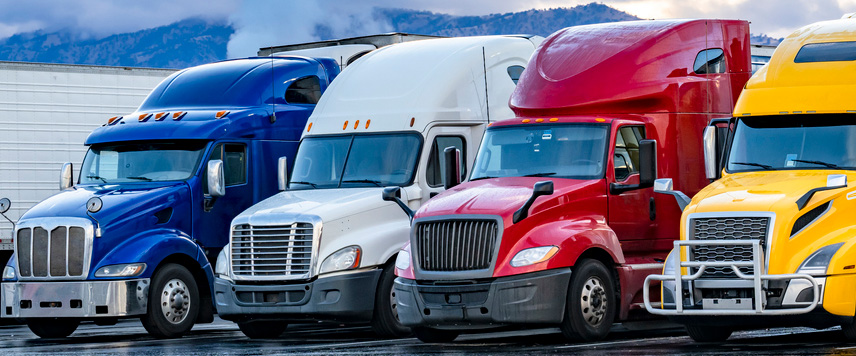Welcome back to the Entrepreneur Zone - our series that covers the basics of Digital Marketing to aid new business owners in starting their marketing journey. Last month, we discussed the basics of SEO. This month, we will discuss Social Media Marketing.
Today, we will explore the terms you need to know, give an overview of the most common social channels, the benefits of both organic and paid social media, and the knowledge you need to move your company forward in the wide world of Digital Marketing.
Social Media Terminology
Audience: Followers, fans, connections, subscribers, etc., that receive your organic posts and those whose demographics match a set demographics you select to filter your ads to the right group of people who would be most interested in your products.
Boosted Post: On Meta platforms, you can easily turn organic content into ad content by boosting. This gives you a limited set of the main ad features.
Click-Through Rate: CTR measures the frequency with which your audience clicks on your ad. It is calculated by dividing the total number of clicks by your ad's impressions.
Conversion: When an audience member takes a specific desired action, we call it a conversion.
Engagement Rate: This measures the number of engagements (likes, comments, shares, etc.) your content receives.
Geo-Targeting: This is defined as using locations to target an audience for your ads.
Influencer Marketing: Marketers utilizing influencers to market your products to their niche audience.
Native Advertising: A type of advertisement that looks like organic content. Several platforms recommend this style of ad content, like TikTok.
Optimizing: The process of monitoring and adjusting your ads based on their performance.
Organic Reach: The number of people that see your content without paid advertising.
Page Likes: This option allows page visitors to like your brand.
Page Followers: This option allows people to follow your brand.
Pixel: A pixel is a small piece of code, unique to each social site, that you place on your website that allows you to track when visitor from a social media platform your website.
Social Listening: This is ensuring that you listen to any and all mentions of your brand across social networks.
Social Media Management Platform: This tool allows you to manage, schedule, and post to multiple social media platforms in one location.
User-Generated Content: Content that your followers, clients, or fans have created that refers to your brand or products.
Organic Social Strategy
Organic social’s focus is on the audience that you currently have. The goal of your organic social media is to humanize your company, showcase your thought leadership, and offer customer service.
People buy from people, not faceless corporations. Social Media is the perfect platform for humanizing your company and making a genuine connection with your buyers. Showcase your staff, hold behind-the-scenes events, and do live Q&As. You do not have to be 100% polished; in fact, less polish can increase your authenticity.
Social media is a key site for product and company research, particularly on Meta's channels. Showcasing your thought leadership is important for building trust with potential clients.
It is important to remember that social media is an important customer service channel. Clients use this channel to reach out to you with product and other questions and expect a timely response. According to Sprout Social, 78% of customers are willing to buy from a business after a positive experience on social media.
Interacting with your audience on social is also a great way to do some basic market research. Spend time getting to know your audience so that you can provide them with the best product or service available.
Paid Social Strategy
The purpose of paid social is to grow your audience and promote your products. There are two types of ad styles on social. The first is native advertising; this is advertising that looks like organic posts. The other is the polished, clear ad style.
According to research by Emplifi, social media ad spending has increased year over year, but CTR has continued to drop. While the effectiveness of social ads appears to be declining, they are still a cost-effective way to spread brand awareness and grow your audience.
What makes social media advertising so effective is the targeting options. They allow you to narrow down your audience to match your buyer personas. This will enable you to get more bang for your marketing dollars.
Influencers
There are five levels of influencers based on their audience size, Mega, Macro, Mid-Tier, Micro, and Nano. Each group has its benefits and drawbacks. We have broken them down to help you decide the best option for your company.
Mega-Influencers: Celebrities
Benefits: Their well-known brands build trust for your products.
Drawbacks: They are the highest cost and have the lowest availability.
Macro-Influencers: Minor Celebrities
Benefits: Produce professional posts and are highly engaged with their followers.
Drawbacks: Costs can still be prohibitive at this level.
Mid-Tier-Influencers: Social Media Stars
Benefits: Incredibly engaged and responsive to their audience.
Drawbacks: Less credible than true celebrities, but more affordable.
Micro-Influencers: Subject matter specialists
Benefits: Highly regarded for their trustworthiness and reliability in their field of specialty. Pricing is more affordable than previous levels of influencers.
Drawbacks: Not professional marketers. More interested in accuracy than design elements.
Nano-Influencers: Local Resources
Benefits: Very relatable! Their community-based following sees them as real people and, as such, reliable.
Drawbacks: While very affordable, they have a very small reach.
Social Media Stats, Content, and Trends
It is important to keep up with the changing demographics and content preferences for each platform to ensure that you send out the right message in the right format at the right time.
For a complete look at the demographics for social media as a whole and by platform, plus a look at which content formats are making the most impact see our article Social Media Stats for 2022.
Social Media trends change regularly. It is important to stay aware of all its trends, both those retiring and those upcoming. To learn more about trends for 2022, we recommend our article 2022 Social Media Trends.
Which Social Platform is right for my company?
With so many options available for your social media marketing, and limited time and resources, it is key that you narrow down which social platform is the best for reaching your target audience.
We have put together a helpful guide, Which Social Media Platform Is Right For My Company.
Conclusion
Social Media Marketing is a vital portion of a well-rounded omnichannel marketing plan. It increases your online presence, builds authenticity, humanizes your company, is your most important customer support channel, and is useful in researching your competitors and your audience.
Do you feel lost when it comes to Digital Marketing? Well, that's why we're here!
YES. YOU GUESSED IT — It's time for the Sales Pitch! (I know you have been expecting it, so we won't disappoint.)
I'm sure you have discovered that Lionzone Digital Marketing created this blog. Surprise!
One of my absolute favorite features of our LZ services is that we don't believe in long-term contracts!
We believe this — If we don't earn your business every day, we don't deserve to keep you!
— Let us earn your business & assist your company with its Digital Marketing needs. You won't regret it. —
Contact the LZ team today at info@lionzone.com or (615) 235-3200.




